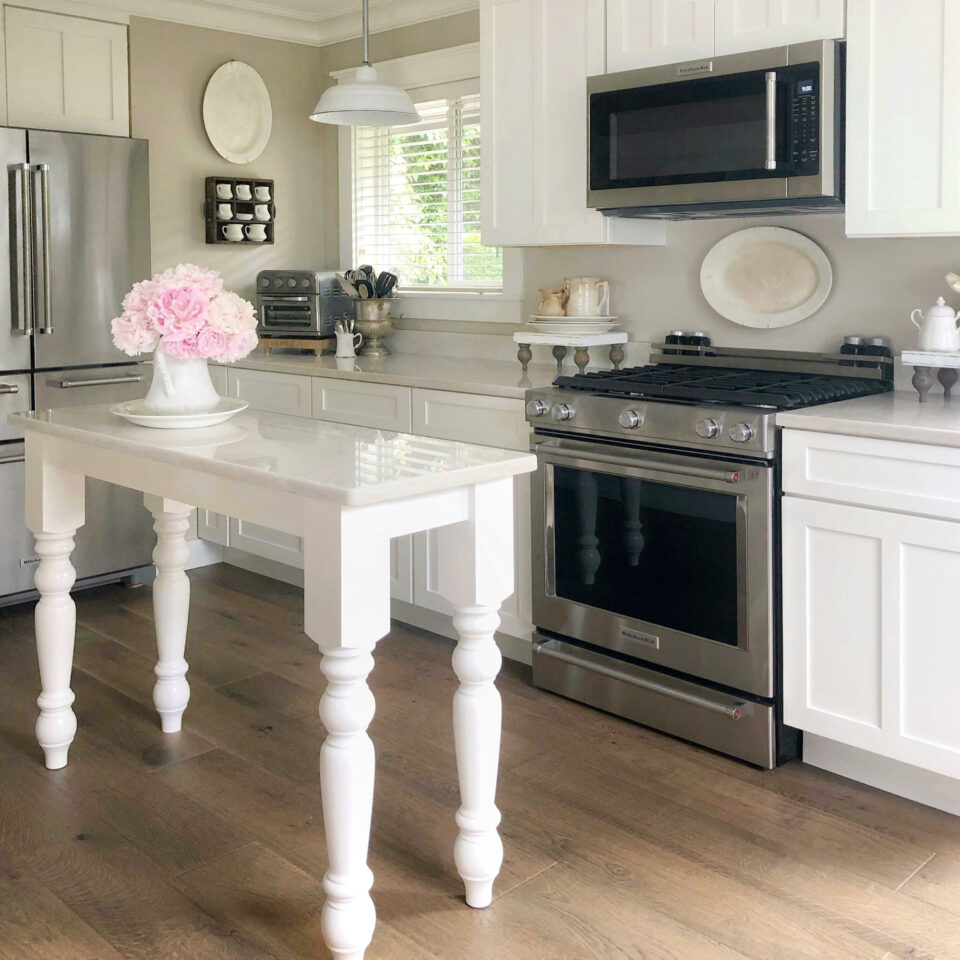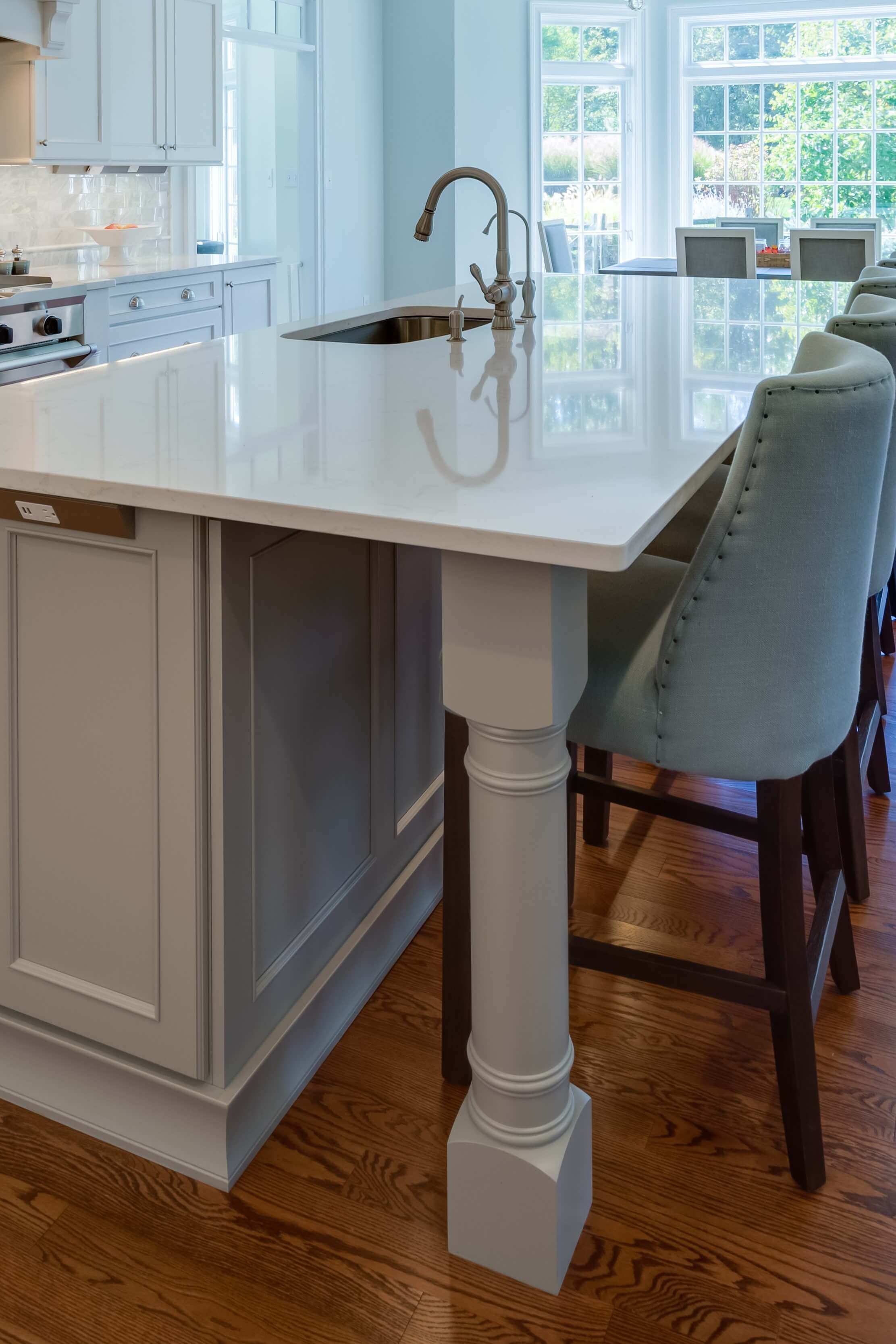Checking Out the Vital Attributes of a Kitchen Area Island Leg for Your Culinary Room
The kitchen area island acts as a central center in any type of culinary space, and the selection of leg style is essential in enhancing both its performance and aesthetic appeal. Understanding the crucial attributes of kitchen island legs-- including product options, style styles, and stability aspects-- can substantially influence the general experience within the kitchen. As we explore these components, we will uncover how thoughtful personalization and accessories can elevate your cooking area island from a plain energy to a striking focal point. What specific considerations should be prioritized to accomplish this balance?
Value of Kitchen Island Legs
Cooking area island legs play an important function in both the functionality and visual appeals of a kitchen space. They not just sustain the weight of the island however likewise improve the total style, contributing to the kitchen's visual charm. The option of legs can determine the design of the cooking area, be it modern-day, traditional, or rustic.
Functionally, durable and appropriately made legs make certain security, enabling the safe usage of the island for various tasks such as food prep work, eating, or amusing. Solid legs avoid wobbling and changing, supplying a reputable surface area for day-to-day activities.
Moreover, the height and placement of the legs can influence the comfort degree for those seated at the island. A well-considered elevation can fit bar feceses or chairs, advertising a welcoming atmosphere for gatherings.
In addition to these useful considerations, kitchen island legs can work as a prime focus in the space (kitchen island leg). Attractive or distinctively designed legs can raise the design visual, making the island a focal point. Thus, choosing the best kitchen area island legs is important for balancing kind and function in any cooking room
Material Options for Legs
Picking the appropriate product for kitchen area island legs significantly affects both longevity and style. Usual material choices consist of steel, rock, and timber, each offering distinctive advantages.
Timber is a preferred selection as a result of its heat and versatility. It can be conveniently tailored to match various style designs, from rustic to contemporary. Woods like oak and maple offer excellent toughness and longevity, while softer timbers can be much more at risk to damage.
Steel legs are preferred for their sleek, modern-day aesthetic. kitchen island leg. Stainless-steel and aluminum are not just robust however also immune to corrosion and corrosion, making them excellent for kitchen area environments. They can produce a commercial look and are often readily available in various surfaces to complement various other cooking area components
Stone legs, such as granite or marble, add an element of luxury and security. While heavier than other products, they offer exceptional longevity and can endure considerable weight. Nevertheless, they might require added assistance to ensure appropriate equilibrium.
Eventually, the choice of product must align with both useful demands and the overall design vision of the cooking area area, guaranteeing that the island legs boost both utility and visual appeals.
Layout Styles to Consider
What layout styles should be thought about when choosing legs for a cooking area island? The choice of leg design dramatically influences the total aesthetic of your cooking space. For a modern kitchen area, streamlined and minimalistic leg designs, such as stainless-steel or geometric forms, can boost the modern-day charm, providing a clean and uncluttered appearance.
In contrast, standard kitchens benefit from timeless styles such as transformed or carved wooden legs, which include warmth and personality. These alternatives often feature detailed information that match vintage furnishings. For a rustic atmosphere, consider legs made from recovered timber or functioned iron, which bring an organic, earthy high quality to the room.
If you lean towards an industrial motif, robust metal legs with a distressed surface might be optimal, giving an edgy yet sophisticated touch. Furthermore, farmhouse design cooking areas can include chunky legs that evoke a feeling of toughness and homeliness.

Elevation and Stability Aspects
The elevation and security of a kitchen island are important components that directly influence its functionality and individual experience. An excellent kitchen area island leg must provide adequate elevation to suit a variety of tasks, from food prep work to casual dining. Commonly, kitchen islands separate 36 to 42 inches high, straightening with basic counter and bar official site heights. This array ensures comfort for individuals while doing numerous tasks, therefore improving the overall use of the space.
Security is similarly important, specifically as kitchen area islands typically serve as focal factors in culinary settings. The leg's accessory to blog the island's base should be secure, making certain durability and resilience versus the wear and tear of daily usage.
Personalization and Accessories
Customization alternatives and accessories for cooking area island legs can substantially enhance both the visual charm and performance of the room. House owners can select from a selection of materials, consisting of metal, stone, and timber, enabling for smooth combination with existing cooking area design. The selection of finish-- be it an all-natural tarnish, paint, or powder layer-- further customizes the appearance, guaranteeing that the island enhances the overall style motif.
Along with material and surface, home owners may likewise discover the incorporation of accessories such as ornamental braces, adjustable feet, or integrated shelving. Braces can supply additional support while contributing to a modern or rustic aesthetic. Flexible feet are specifically advantageous for unequal floor covering, making certain the island remains stable and degree, which is crucial for both security and functionality.

Conclusion
In verdict, cooking area island legs offer a critical role in providing stability and boosting the total visual of the culinary area. Customization alternatives and devices can raise the next kitchen area island, making it an unique focal point within the home.
The kitchen island serves as a main center in any type of culinary space, and the choice of leg layout is crucial in boosting both its performance and visual allure. Comprehending the necessary functions of kitchen island legs-- consisting of product choices, design styles, and security aspects-- can substantially affect the overall experience within the cooking area.Kitchen area island legs play an important role in both the capability and appearances of a cooking area area.What design styles should be considered when selecting legs for a kitchen island?In verdict, kitchen area island legs serve an essential function in offering security and improving the total aesthetic of the cooking area.